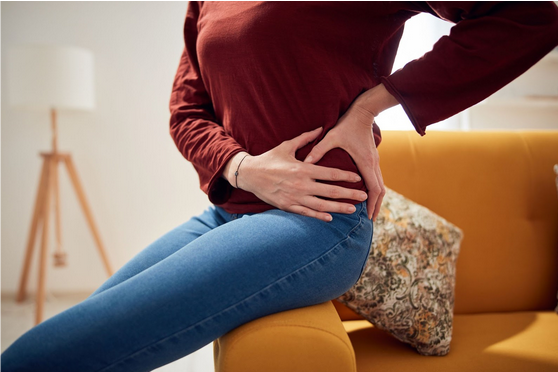Anatomy of the Hip Joints
To allow for an extensive range of motion, the hip is composed of several complex structures:Bones
The hip connects the lower body to your torso with the femur and the pelvis. Also known as the thigh bone, the femur is one of the longest bones in the body, while the pelvis is made of three bones:
- Ilium
- Ischium
- Pubis
Ligaments
The femur and pelvis are held together by a network of ligaments—strong, flexible bands of tissue that connect bones to other bones. There are three primary ligaments that support the hip:- Iliofemoral ligament: strongest ligament in the body, connects the pelvis to the femur, limiting how far the leg can be pulled out to the side
- Pubofemoral ligament: runs from the pelvis to the femur and restricts how far the leg can be pulled backward
- Ischiofemoral ligament: connects the femur to the lower part of the pelvis and limits how far the leg can be rotated inward
Muscles
Surrounding the various ligaments and bones are numerous muscles to help allow a large range of motion. The prominent muscles in the hip region include:
- Gluteal muscles
- Adductors
- Hamstrings
- Iliopsoas
- Hip flexors
Articular Cartilage
The articular cartilage is a smooth, rubbery tissue that cushions the ends of bones and allows them to move smoothly against each other. In the hip, articular cartilage covers the surface of the femoral head and acetabulum, helping to reduce friction and absorb shock.
Common Hip Conditions
The hip joints are among the most flexible joints in the body, allowing for significant mobility. However, this flexibility also makes the hip joints susceptible to injury. Some common hip conditions include:Bursitis
Bursitis is a condition that occurs when the bursa, a small sac-like structure that cushions and lubricates the joint, becomes inflamed. There are two main bursae in the hip:
- Trochanteric bursa
- Iliopsoas bursa
Bursitis can lead to pain, limited range of motion, swelling, and redness. Often, pain may become worse from lying down or prolonged exercise.
Labral Tear
The labrum is a ring of fibrous cartilage located in the acetabulum that cushions your hip joints. This structure is vital to stability and mobility, so when labral tears occur, it often leads to several adverse symptoms, such as:- Unsteadiness
- Hip pain and stiffness
- Locking or catching sensation
- Pain in the groin or buttocks
- Limited range of motion
Femoroacetabular Impingement
Femoroacetabular impingement (FAI) occurs when the hip’s bones are abnormally shaped, causing them to not fit together properly. As a result, the bones rub against each other, leading to pain and stiffness in the hip. There are three different kinds of impingements:- Cam impingement: when the femoral head is not entirely round
- Pincer impingement: when the socket is too deep and extends over the femoral head
- Combined impingement: when both structures are irregularly shaped
Hip Fractures
A hip fracture is a break in one or both of the bones that make up the joint. Fractures often occur due to osteoporosis, which is a condition that causes bones to become brittle and weak, making them more likely to break. Hip fractures can be very serious and may lead to disability if not adequately treated.Seek Treatment for Hip Pain at The Steadman Clinic
If you’re experiencing discomfort in one or both of your hips, it’s important to seek treatment before your condition progresses. At The Steadman Clinic, we offer a number of comprehensive hip treatments to help you get back your quality of life.Along with non-surgical treatments, our practice is home to some of the top orthopedic surgeons specializing in hip injuries. Among the most common procedures our surgeons perform include:
- Hip arthroscopy
- Hip morphology
- Hip replacement


